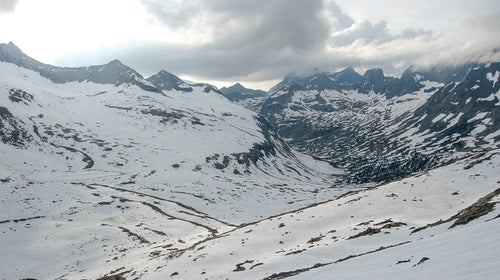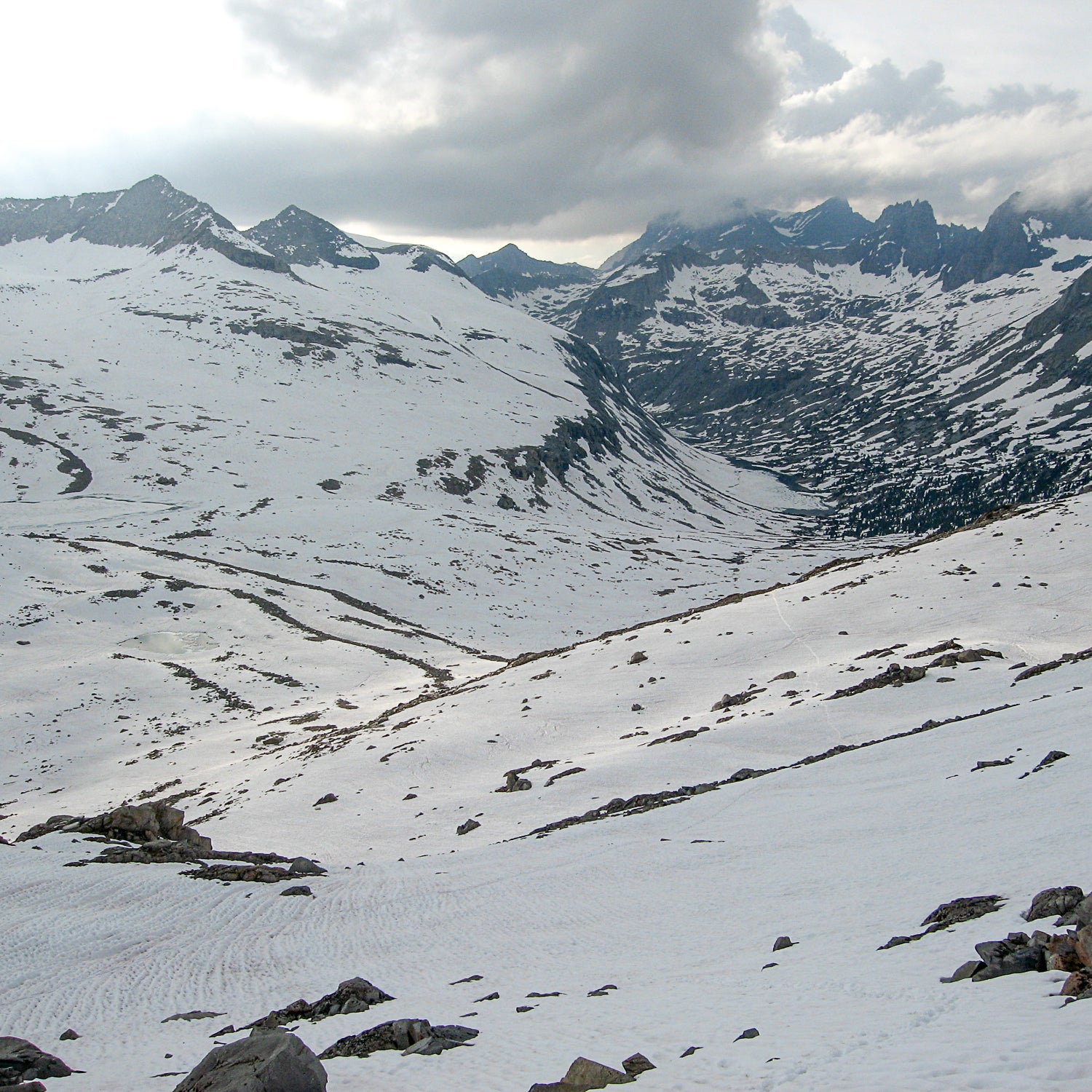ItÔÇÖs been a wet winter throughout the American West and exceptionally wet in California, Oregon, Utah, Colorado, Arizona, and New Mexico.
The deep snowpack is great news for farmers and residents of these semiarid states, but it will create unique conditions and hazards for backpackers in the High Sierra and southern Rockies, specifically (but not limited╠řto) the Pacific Crest, John Muir, Continental Divide, and Colorado Trails╠řand off-trail itineraries like the Yosemite High Route and Pfiffner Traverse.
│ž▓ď┤ăĚ╔▒Ŕ▓╣│Ž░ý╠ř╣ˇ▓╣│Ž│┘▓§
For most of the West, the definitive source on╠řsnowpack information is the National Water and Climate Center, which provides╠řmaps and snow╠ř
California has an monitoring system, managed by its Department of Water Resources.╠ř
California
This winter has been most extraordinary in California. The snowpack between Sequoia and Kings Canyon National Parks and the Oregon border ranges from 151 to 160 percent of normal levels as of╠řMarch 22, as defined by its snow-water equivalent (SWE), or the amount of liquid water in the snow.
SWE is correlated with, but different than, snow depth, and itÔÇÖs the more important measurement for water managers. What does 150 percent of normal SWE look like? Well, the in northern Yosemite is currently reporting 131 inches (11 feet) of snowpack, which converts to 56 inches of liquid water.
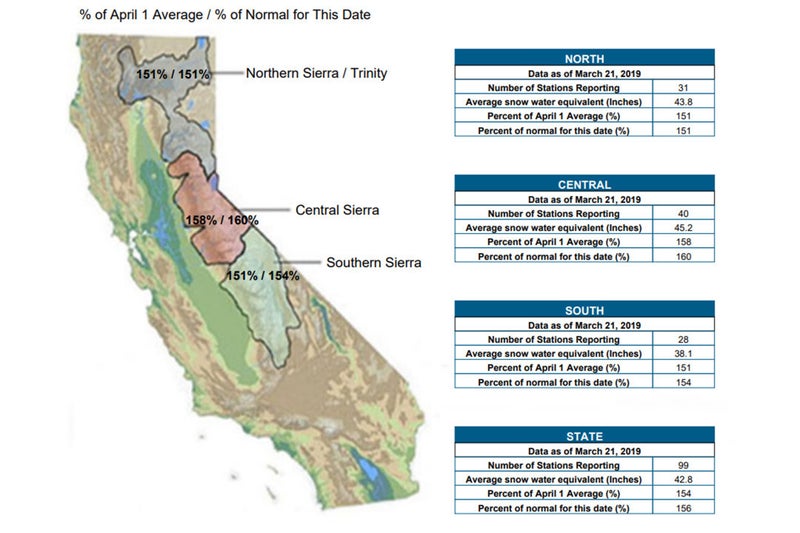
For an updated snowpack map, .
The Rest╠řof the West
Northern states like Washington, Idaho, and Montana have╠řreported╠řgenerally average snowpacks╠řthis winter. But Nevada and the southern half of Oregon have received similar weather to California. The Four Corners statesÔÇöArizona, New Mexico, Utah, and ColoradoÔÇöhave╠řalso╠řbeen drenched.
In Colorado, for example, snowpack╠řis╠řbetween╠ř125 and╠ř162 percent of normal levels╠řas of╠řMarch 22, with the stateÔÇÖs southern ranges, like the San Juans, Elks, and Sawatch, on the upper end of that spectrum.
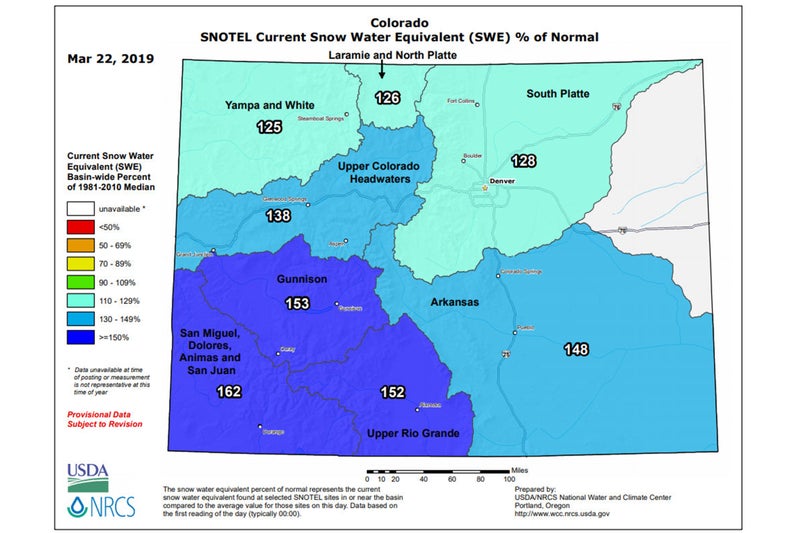
For updated state╠řand regional snowpack maps, .
Historical Context
The snowpack in some parts of the West is exceptional, but itÔÇÖs still not a record-breaking winter. California is still a hair below the 2016ÔÇô17 pace and not even close to its record 1982ÔÇô83 winter. The statewide Colorado snowpack is similar to 2007ÔÇô08╠řbut less than its winter levels╠řof 1996ÔÇô97 and 1992ÔÇô93.
Backpacking Expectations
Even though itÔÇÖs not record-breaking, the snowpack will have significant implications this summer for backpackers╠řas well as day hikers, car campers, trail runners, fishermen, mountain bikers, and anyone else who recreates in the high country. HereÔÇÖs why.
1. A belated melt
After a normal winter, the high country transitions in June. In May, itÔÇÖs still ski season, but by July, hiking shoes are the norm.╠řJune is something in between, a time╠řI refer to as the early season.
This year, however, ÔÇťnormalÔÇŁ conditions will be delayed by about a month, because the snowpack will require several more weeks of summerÔÇÖs high temperatures to completely melt off. June trips will entail extensive snow travel, and July trips will still have lots of snow on high, shaded, and leeward slopes.
2. High runoff
Unbridged crossings of swollen creeks prove to be╠řthe greatest danger to early-season backpackers. In 2017, Pacific Crest Trail thru-hikers drowned in the High Sierra, where such crossings are common.╠ř
3. Prolific mosquitoes
The mosquito season starts when temperatures finally get warm enough╠řand ends when breeding areas dry up or after the first hard frost. Many breeding areas will stay wet this summer, meaning that mosquito pressure will extend into August and maybe even September.
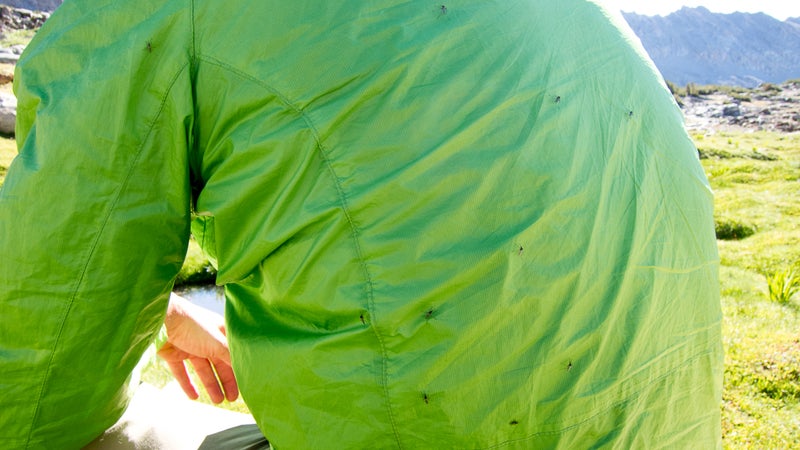
Required Gear and Skills
These early-season conditions are not trip stoppersÔÇöthey can be successfully managed with the right gear and skills.
Clothing
The sun is always intense in the West. But itÔÇÖs turbocharged by lingering snow, which reflects like a mirror.
Protect your skin with full-coverage clothing. My hiking outfit will look something like this:
- Shirt:
- Underwear:
- Pants:
- Hat:
- Sun Gloves: Glacier Glove Ascension Bay
- Polarized sunglasses:
After the mosquitoes hatch, I swap my knit-polyester top for a permethrin-treated nylon long sleeve, like the . Insect-resistant polyester or merino knits are harder to find╠řbut far more breathable than stuffy wovens.
Footwear and Foot Care╠ř
To kick steps and hold edges in soft spring snow, itÔÇÖs helpful to have footwear made with durable materials, a stiff midsole, and an aggressive outsole. My favorite is , but its slim fit may force you into other shoes with similar qualities.
Every day expect your feet to be damp, if not soaked, by saturated meadows, submerged trails, and swollen creeks. It will be impossible to keep your feet dry. Trust me on this one, not the manufacturers of ÔÇťwaterproofÔÇŁ footwear. Learn . My recommended techniques include:
- Air out your feet regularly during the day.
- Carry dedicated sleeping socks so your feet are warm and dry every night.
- Apply a waxy balm like to condition╠řyour skin.
Dry camp shoes are a luxury╠řand recommended for more casual trips. Inexpensive sandals are ideal, but durable bread bags are the lightest optionÔÇöwear them between your dry sleeping socks and your wet hiking shoes.
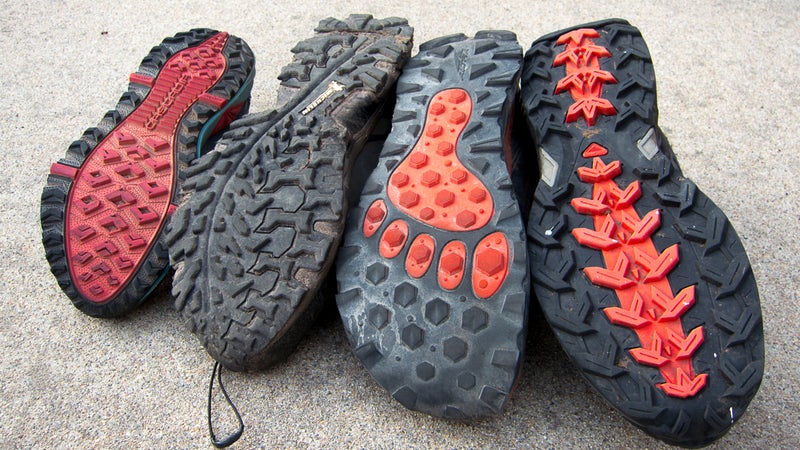
Tools
Spring snowpack is not like winter snowpack. It consolidates as it melts, and by June,╠řyou can normally walk atop it without punching through, especially in the morning and in areas that receive heavier snow (i.e., the High Sierra, not Colorado). So snowshoes are unnecessary.
I might recommend, however, carrying hiking crampons, like the , and/or a lightweight ice ax, like the . The crampons will make steep slopes faster and safer. And the ax can be used to self-belay, chop steps, glissade, and self-arrest if you fall.
Navigation
If the hiking trail is buried under snow, youÔÇÖd better know how to navigate without it. Do you know how to read a map, use a compass, approximate your location with an altimeter watch, or hike to a waypoint with a GPS? If not, start learning how, and master your skills in the field. I am guiding trips in July in Yosemite National Park, and IÔÇÖm certain that navigation will be a daily focus.
River Crossings╠ř
Two items will make river crossings easier: trekking poles and a lightweight pack. The former gives you additional points of stability, and the latter keeps you more agile.
But more importantly, creek crossings must be scheduled properly and done at the optimal location. Water levels fluctuate daily, coinciding with the rate of snowmelt. Normally, levels peak near the end of the day and bottom out in the morning. The location also matters. Trails often do not cross in the safest spot. Be willing to leave the trail for areas where the river slows down, widens out, or has a sandier bottom.
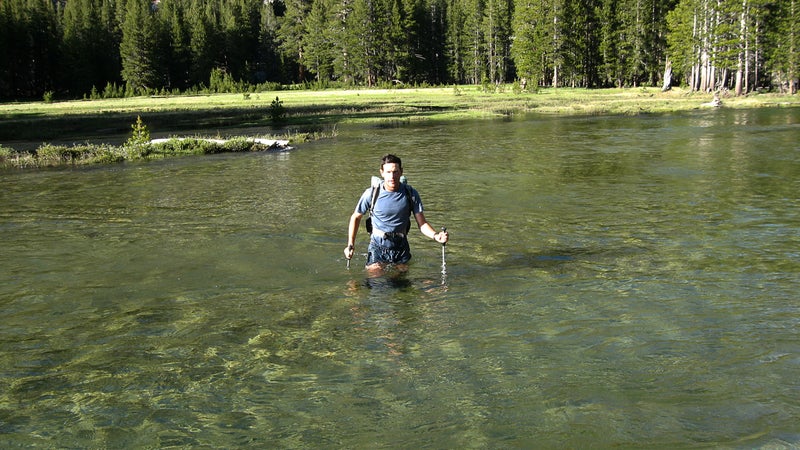
Get Excited!╠ř
The early season is one of my favorite times to be backpacking. The conditions are challenging╠řand force me to bring my A game. With these tips, I hope that youÔÇÖre on your way, too.
